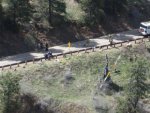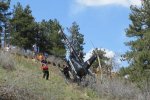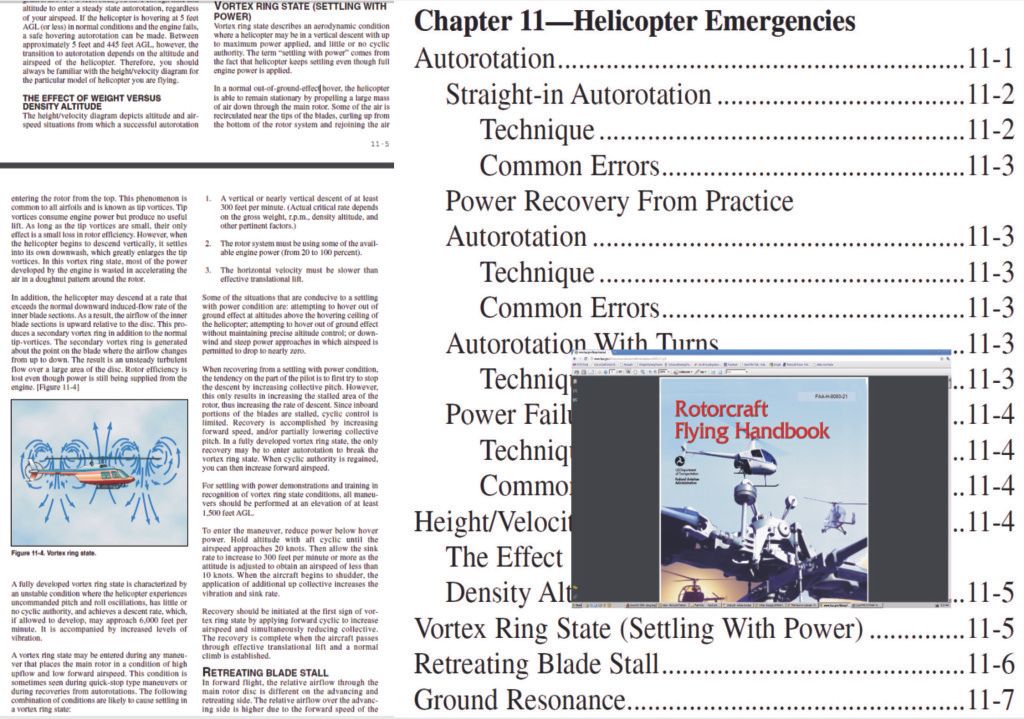Its a shame this happened but thankfully no one was hurt. With these videos, we all can learn from these mishaps. In my opinion, it was settling with power and not a vortex ring state. There are differing views in books on the definitions of these two conditions, some books say they are the same, but in reality there is a difference according to some more in depth studies on these two conditions. I was trained to learn Vortex ring state developes when there is at least 300 fpm descent, but a heavily loaded chopper like this one and high density altitude, the descent rate necessary to enter a true vortex ring state would be higher because of higher inflow velocity through the rotor. A lightly loaded helicopter at low altitude actually can eenter vortex ring state with a lower vertical descent rate simply because it doesn't have near the pitch in the blades and a much less induced flow rate coming through the rotor.The rotor has to be descending at a higher rate to start eating its own downwash. I see the R44 descending very slow at first with a low rate of descent, and turning to the left. It looks like a classsic settling with power to me, with not enough descent rate to be in a vortex ring state, with at the end just starting to have enough descent rate to start entering a vortex ring state. Its possible the left yaw was his power was pulling down, less torque, and the left yaw would have happened. We should know more when the final report comes out.
Note- I just edited this as I found one explanation of settling with power versus vortex ring state.
https://blog.aopa.org/helicopter/?p=84
You can read here and see some are trained they are the same...but if you read some of the intense posts, you can see there definitely is a difference between vortex ring state and settling with power.
https://helicopterforum.verticalreference.com/topic/10982-vortex-ring-state-vs-settling-with-power/
You can also Google vortex ring state/ settling with power and find many places that say they are the same....while the experts like Ray Prouty and others clearly explain there is a difference.
In my simple understanding....settling with power can be hovering at near max weight with just enough airspeed to hold a hover...then the airspeed reduces a little and now you have a less efficient rotor that demands more power than is available. You start to settle and there isnt much of a way out of it if you are near the ground. This can also occur if you are hovering at gross into a slight wind and turn downwind....now you start to settle with power because you dont have as much clean air coming into the rotor. Another situation for settling with power is say I am flying on a high density altit ude day with high gross weight....and just barely able to hold a hover. Lets say now I am descending to land into a confined area like my hole next to my stairshop. I am coming in at a steep descent although maintaing just a 200 foot per minute descent rate. That rate of descent will not get me into a vortex ring state....but....it most definitely could be the straw that breaks my hovering camels back as before entering that descent rate....I could barely hover....now I have to arrest that descent rate while coming down into my confined area. I may very well find myself with ZERO options as I could now not have enough power to stop the descent, I will crash because of settling with power, and not entering a vortex ring state. Definitely a difference here.
There are always vortex ring circulation going on in a hover at the tips, but they are small. When you start descending at greater than 300 feet per minute...then those vortices start increasing as you are descending into your own downwash more. The downwash velocity is much more than 300 feet per minute and the heavier the helicopter is...and the higher the density altitude, the higher the rate of this downwash. It takes a higher vertical descent rate to enter a vortex ring state at gross weight/ high density altitude than does a lightly loaded helicopter at low density altitude. This case was a high density altitude and heavily loaded.......and it just had a slow rate of descent that did get higher at the time of impact.
Stan



